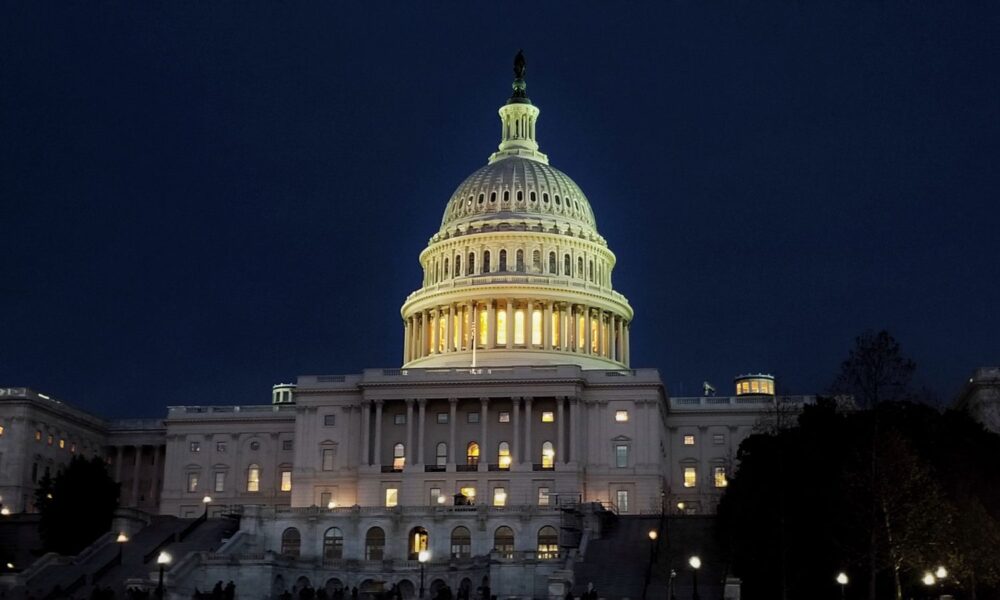The US federal government is, once again, about to reach the limit on our national debt. On Wednesday last week, House Speaker Kevin McCarthy released draft legislation that would raise the debt limit, but also make a variety of other sweeping changes to current law.
Alarmingly, this proposed legislation would abandon recent investments in renewable energy while boosting fossil fuel production, alongside other potentially harmful provisions.
As the public is reminded every few years, the US government operates under a self-imposed limit on the amount of money it can borrow to fund federal programs. The nonpartisan Congressional Budget Office (CBO) currently projects that without action to raise or suspend the debt limit, the government will hit its current ceiling between July and September 2023. Treasury Secretary Yellen has been among those most recently sounding the alarm on the timing of breaching the debt ceiling. Such a breech would have devastating consequences to the US and world economies.
Congressional Democrats generally support increasing the debt limit when necessary and elected Republicans have supported lifting the ceiling during Republican administrations. With a Republican majority in the House, a Democratic administration, and a potential default looming, however, Republicans see an opportunity to leverage policies into law that would not be possible in other circumstances.
President Biden and Senate Democrats insist that legislation to raise the debt limit should not include extraneous provisions and, so far, have refused to negotiate with House leadership. The draft bill released Wednesday is Speaker McCarthy’s attempt to force Democrats to the table.
McCarthy bill would unwind years of climate progress
The draft bill would repeal virtually all clean energy tax incentives included in the Inflation Reduction Act enacted last year. This would include reversing new investments in solar, wind, and other clean energy options, as well as abolishing credits for more efficient homes and businesses. The Republican plan would also repeal incentives for manufacturing and owning electric vehicles.
So-called “permitting reform” for energy infrastructure is included as well. The term is nebulous enough to receive superficial bipartisan support and to poll well, but it means different things to different people. And those details are critical for determining whether reforms align with climate and public health goals—or are simply yet another giveaway to fossil fuel interests.
For many Republican lawmakers, permitting reform refers to changing current environmental laws, including the National Environmental Policy Act (NEPA), to increase fossil fuel production on federal lands. Late last month, the House passed H.R. 1: The Lower Energy Costs Act, on a largely party-line vote. The CBO summarizes the bill this way:
H.R. 1 would require the Department of the Interior (DOI) to conduct additional sales of oil and gas leases on the Outer Continental Shelf, reduce royalty rates for new onshore oil and gas leases, and authorize DOI to spend . . . certain receipts from oil, gas, and wind leases. The bill also would repeal some programs of the Department of Energy and the Environmental Protection Agency that were established by [The Inflation Reduction Act] . . . Additionally, H.R. 1 would amend provisions of current law that regulate permitting of certain proposed energy-related projects.
Congressional Budget Office
According to the CBO estimate, H.R. 1 would increase federal spending by $430 million by 2033. Nevertheless, House Republicans have included much of their energy bill in the debt limit proposal under the guise of permitting reform.
Rather than continuing progress toward a more fair, lower-carbon economy, these proposals would reverse course. The proposal would ramp up oil and gas production and profits by limiting meaningful public input and barring communities harmed by pollution from seeking legal remedies, while hindering development of renewable energy sources and technologies.
What is permitting reform? Depends who you ask.
There is a different version of “permitting reform” supported by renewable energy proponents.
Reaching net-zero carbon emissions by 2050 will require significant expansion of renewable energy production and transmission, and the recently passed Inflation Reduction Act and Infrastructure Investment and Jobs Act give these efforts a significant boost. However, current bottlenecks, largely at the Federal Energy Regulatory Commission, delay getting renewable energy online quickly. There are responsible proposals to address these issues and this too, is “permitting reform.”
Some policymakers appear open to a bipartisan deal that would include some of what House Republicans mean when they say “permitting reform” with some of what renewable energy advocates mean when they use the term, as part of the debt ceiling package. Such a “compromise” would be a failure.
Responsible, truly bipartisan climate policy should not be developed through the ultra-politicized process of raising the debt ceiling because the terms of the debate are skewed.
The House version of H.R. 1 would never pass the Senate, nor would President Biden sign it as stand-alone legislation. The tax incentives for renewables enacted last Congress are already having positive impacts on local economies, including in rural, conservative areas, and would be difficult to repeal outside of the debt limit fight.
Existing legal, tax, and regulatory systems already give an unfair advantage to fossil fuel production. Our fossil fuel energy system has imposed a disproportionate public health and environmental toll on Black, Brown, and Indigenous communities—we cannot repeat those mistakes as we transition to a clean energy system.
Any “reforms” should focus on integrating renewable energy generation alone, while ensuring strong social and environmental safeguards. A just, equitable, sustainable transition to an economy based on renewable energy must make more room for public input, especially from frontline communities, not less.
Responding to the climate crisis and avoiding default on our national debt are too important to make one contingent on the other.
The size of the original image used as the feature image for this blog was modified under a CC BY-SA 4.0 license.

